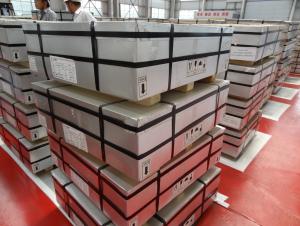Steel, the backbone of modern construction, has been a cornerstone of architectural innovation for centuries. Among its many forms, the I-beam stands out as a versatile and robust component, essential for the structural integrity of countless buildings and bridges. But what makes the I-beam so special? Let’s dive into the world of steel and explore the benefits of this engineering marvel.
The Anatomy of an I-Beam
Before we appreciate the benefits, it’s crucial to understand the anatomy of an I-beam. Picture a capital ‘I’ – that’s the basic shape. It consists of a top flange, a bottom flange, and a web that connects them. This design is not just aesthetically pleasing but also incredibly strong. The flanges provide resistance against bending, while the web offers stability and support.
Strength and Rigidity
One of the most significant advantages of I-beams is their strength and rigidity. They can support substantial loads without deforming or breaking. This is particularly important in construction projects where the structure must withstand the test of time, as well as the forces of nature.
Versatility in Application
I-beams are not one-trick ponies. They are used in a wide range of applications, from residential to commercial construction, and even in bridges and industrial settings. Their adaptability makes them a favorite among engineers and architects who need a reliable solution for various projects.
Easy to Work With
Working with I-beams is a breeze. They are easy to cut, weld, and bolt, which simplifies the construction process. This ease of use not only speeds up construction but also reduces the potential for errors, ensuring a higher quality end product.
Durability and Longevity
Steel is known for its durability, and I-beams are no exception. They can withstand harsh weather conditions, corrosion, and other environmental factors that might affect other materials. This means that structures built with I-beams are likely to have a longer lifespan, reducing the need for frequent maintenance and repairs.
Sustainable and Recyclable
In today’s eco-conscious world, it’s heartening to know that I-beams are made from a sustainable material. Steel is one of the most recycled materials on the planet, which means that using I-beams contributes to a circular economy and reduces waste.
Cost-Effectiveness
While the initial cost of I-beams might be higher than some alternatives, their long-term benefits make them a cost-effective choice. The reduced need for maintenance and repairs, combined with their durability, means that the investment in I-beams pays off over time.
Aesthetic Appeal
Let’s not forget the visual impact of I-beams. Exposed I-beams in a building’s design can create a modern, industrial look that many find appealing. They can be left as-is or painted to match the aesthetic of the project.
The Future of I-Beams
As technology advances, so does the manufacturing and application of I-beams. Innovations in steel production and construction techniques are leading to stronger, lighter, and more efficient I-beams. This progress ensures that I-beams will continue to be a vital part of our built environment for years to come.
In Conclusion
The benefits of steel I-beams are numerous and compelling. From their strength and rigidity to their versatility, ease of use, durability, sustainability, cost-effectiveness, and aesthetic appeal, I-beams are truly a wonder of modern engineering. As we continue to push the boundaries of what’s possible in construction, the humble I-beam stands as a testament to the ingenuity of human design and the enduring power of steel.

